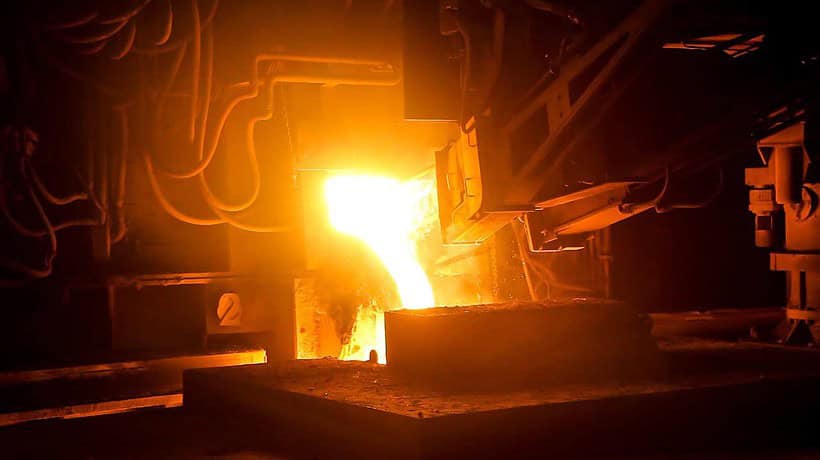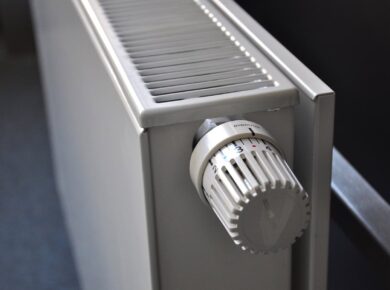Table of Contents Show
Furnaces are critical in keeping homes warm during the colder months in Billerica, MA. However, with their operation comes a serious risk: carbon monoxide (CO) leaks. Often called the “silentkiller,” carbon monoxide is a colorless, odorless gas that can be lethal when inhaled. Understanding how to detect and prevent carbon monoxide leaks is essential for ensuring your household’s safety.
What Is Carbon Monoxide and Why Is It Dangerous?
Carbon monoxide is a byproduct of burning fuels like natural gas, oil, wood, or propane. While properly functioning furnaces are designed to vent this gas outside, any malfunction can cause CO to leak into your home. Prolonged exposure to carbon monoxide can lead to serious health issues and, in severe cases, death.
Health Risks of Carbon Monoxide Poisoning
• Mild exposure: Symptoms include headaches, dizziness, and nausea.
• Moderate exposure: Chest pain, confusion, and difficulty breathing may occur.
• Severe exposure: Prolonged exposure can result in unconsciousness, brain damage, or death.
The Centers for Disease Control and Prevention (CDC) reports that more than 400 people in the United States die from accidental carbon monoxide poisoning each year.
Signs of a Carbon Monoxide Leak in Your Home
Detecting a carbon monoxide leak early can save lives. Here are some warning signs:
1. Unusual odors: While carbon monoxide itself has no odor, leaks may coincide with the smell of burning fuel or musty, stale air quality.
2. Yellow or flickering pilot light: A properly functioning pilot light should burn blue. A yellow flame can indicate improper combustion and a potential CO problem.
3. Soot around your furnace: Dark or sooty stains near the furnace or vents can indicate incomplete fuel combustion.
4. Increased condensation: Excessive moisture on windows, especially near the furnace, can be a sign of improper ventilation.
5. Health symptoms in your household: If multiple people in your home experience unexplained flu-like symptoms, especially when indoors, it may be due to CO exposure.
Common Causes of Carbon Monoxide Leaks
Understanding the sources of CO leaks can help you take proactive measures to prevent them.
1. Cracked heat exchangers: Over time, the heat exchanger in your furnace can crack, allowing carbon monoxide to escape into your home.
2. Blocked ventilation: Chimneys, flues, or exhaust pipes that are blocked by debris or snow can trap CO inside.
3. Poor maintenance: Neglecting regular furnace maintenance increases the likelihood of wear and tear, leading to leaks.
4. Improper installation: Furnaces that are incorrectly installed may have faulty connections, allowing CO to escape.
How to Detect Carbon Monoxide Leaks
Install Carbon Monoxide Detectors
Carbon monoxide detectors are your first line of defense. Place detectors in key areas:
• Near bedrooms: This ensures you are alerted to leaks while sleeping.
• On each level of your home: For maximum coverage, install a detector on every floor.
• Near the furnace: This allows for early detection of potential leaks.
Test detectors monthly and replace batteries every six months. According to the National Fire Protection Association (NFPA), detectors should be replaced every 5-7 years to ensure accuracy.
Monitor Your Furnace
Regularly inspect your furnace for visible signs of wear, such as rust, cracks, or soot.
Be Aware of Symptoms
Pay attention to symptoms like headaches, nausea, or fatigue that worsen indoors and improve when you leave the house.
Preventing Carbon Monoxide Leaks
Taking preventive measures can significantly reduce the risk of carbon monoxide leaks.
Schedule Annual Furnace Inspections
A professional HVAC technician can identify and fix potential issues before they lead to CO leaks. Regular inspections include:
• Checking for cracks in the heat exchanger.
• Ensuring proper ventilation.
• Testing combustion efficiency.
The U.S. Department of Energy recommends scheduling maintenance at least once a year, ideally before the heating season begins.
Keep Vents and Chimneys Clear
Ensure that all vents, chimneys, and exhaust pipes are free of debris, snow, or animal nests. Regularly inspect these areas, especially after heavy storms or snowfall.
Maintain Proper Airflow
Blocked airflow can lead to incomplete combustion and CO buildup. Keep the area around your furnace free from clutter, and ensure filters are clean and replaced regularly.
Install Ventilation Safety Features
Modern furnaces often come with safety features like sealed combustion chambers or draft hoods. If your system lacks these, consider upgrading or retrofitting them for added safety.
Winter-Specific Safety Tips in Billerica, MA
Billerica’s snowy winters add unique challenges to preventing carbon monoxide leaks. Follow these additional precautions during the colder months:
1. Check outdoor vents after snowfall: Snow can easily block furnace exhaust pipes, trapping inside your home. Clear snow promptly after storms.
2. Avoid using generators indoors: If using a generator during power outages, place it outside and far from windows or doors.
3. Monitor fireplace use: Ensure chimneys are cleaned annually and that wood-burning stoves are properly ventilated.
What to Do If You Suspect a Carbon Monoxide Leak
If you suspect a carbon monoxide leak, take immediate action:
1. Evacuate your home: Leave the building immediately and ensure all occupants are accounted for.
2. Call emergency services: Dial 911 or contact your local fire department to report the issue.
3. Seek medical attention: If you or anyone in your household shows symptoms of CO poisoning, seek medical help immediately.
4. Shut off the furnace: If it is safe to do so, turn off the furnace and any other potential CO sources.
Carbon monoxide leaks from furnaces are a serious risk, but they can be effectively managed with proper awareness and preventive measures. Homeowners in Billerica, MA, should take proactive steps, including regular maintenance, installing detectors, and monitoring their systems for warning signs. By staying informed and vigilant, you can ensure the safety and well-being of your household during the heating season.






